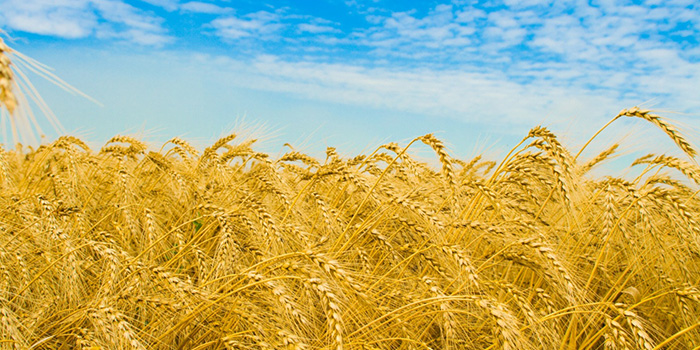 Gluten-free product sales are expected to be as high as 15.6 billion by the end of 2016, and with 28 percent of Americans cutting back on bread, it seems a new dietary trend is upon us. Gluten-free is in and bread is out, but such dietary trends are often fads. Take the cholesterol-free era, for example, which deemed cholesterol-rich foods as the cause of heart disease –only to find out after almost 60 years and a massive dietary shift that cholesterol actually had little to do with heart disease. In fact, this January, cholesterol was finally taken off the nutrient concern list by the FDA, but not after some significant damage to human health that may be linked to the rise of gluten sensitivity today.
Gluten-free product sales are expected to be as high as 15.6 billion by the end of 2016, and with 28 percent of Americans cutting back on bread, it seems a new dietary trend is upon us. Gluten-free is in and bread is out, but such dietary trends are often fads. Take the cholesterol-free era, for example, which deemed cholesterol-rich foods as the cause of heart disease –only to find out after almost 60 years and a massive dietary shift that cholesterol actually had little to do with heart disease. In fact, this January, cholesterol was finally taken off the nutrient concern list by the FDA, but not after some significant damage to human health that may be linked to the rise of gluten sensitivity today.
The shift from a diet rich in good fats to a diet devoid of them resulted in a global craving for a quicker, faster and more efficient delivery system of fuel for the body. The replacement fats were highly processed in order to extend their shelf life, rendering them indigestible and undeliverable as a fuel supply. Cravings for energy were satisfied with more highly processed sugar-laden foods that left America craving the new kids on the block: comfort foods and fast foods. Many of these foods were highly processed from wheat and corn that had been overeaten and coincidently subsidized to be grown in excess for pennies on the dollar. These quick-energy foods would spike and crash blood sugars, unknowingly sowing the seeds for the epidemics we find today: uncontrollable cravings, obesity, diabetes, depression and cognitive decline.
Five Facts We Haven’t Heard from The Gluten-Free Industry
There are many more pieces to this puzzle, but there is no denying that major dietary shifts away from the foods that we have been genetically adapted to eat can deliver unintended consequences. So, before we completely change our diet once again, let’s look at some of the facts that we haven’t heard from the gluten-free industry:
- Experts tells us that we have been only eating wheat for 10,000 years, and that is not enough time for us to have genetically adapted to digesting it. New studies at the University of Utah have found evidence –from the teeth of early humans as far back as 3.4 million years ago – that glutinous grasses like wheat and barley were eaten as a significant part of their diet, suggesting that we actually have millions, not thousands, of years of genetics for digesting wheat.
- We are more genetically able to digest wheat than we are meat. According to the University of Utah study, the earliest definitive evidence that early humans hunted their own meat was 500,000 years ago, while we have been digesting wheat and gluten for more than 3 million years. Ironically, many gluten-sensitive individuals are shifting to a Paleo Diet that is much higher in meat – a food we may be less genetically adapted to digest.
- In one report, published in the Journal of Agriculture and Food Chemistry, the average American ate 86 pounds more wheat flour in the year 1900 than they did in 2008, suggesting that the explosion of gluten sensitivity may not be due to gluten itself.
- In another study, when the ancient wheat, Kamut, was compared with modern wheat varieties, Kamut had twice as much gluten, but reduced inflammation two-fold compared to the modern wheat. In addition, the Kamut, with two times more gluten, also lowered cholesterol and blood sugar.
- There are also scores of studies that suggest increased consumption of whole grains and whole wheat are linked to weight loss, better blood sugar, better cardiovascular health, improved cognitive function, reduction of cancer risk and increased longevity.
Regardless, gluten has been deemed the new poison on the scene. Gluten sensitivity is real for many people, but are we certain gluten is the cause? Could it be the processed nature of the wheat we eat, a 60-year diet of processed fats and preservatives, overeating wheat, or a stressed and broken down digestive system that plagues most Americans?
Five Suggestions for Wheat Consumption
- Eat sourdough bread, which has been fermented. This can render the bread gluten-free.
- Make sure the ingredients of the bread you eat has only organic wheat, salt, water and a starter, with no added oils or sweeteners. If you do not recognize the ingredients, don’t eat them.
- Eat wheat in season – allowing more to be eaten in the fall and winter when it was originally harvested, and less in the spring and summer.
- Make sure it is organic, as the pesticides and preservatives can damage the intestinal tract and set you up for weak digestion and intestinal inflammation.
- Try to eat your wheat in the middle of the day as part of your main meal. This is when digestion is strongest, so attempt to eat less wheat at night.
Before we convict a grain that has been eaten for millions of years, why not change the wheat we eat as the first step to re-booting and rejuvenating our broken down digestive systems.
